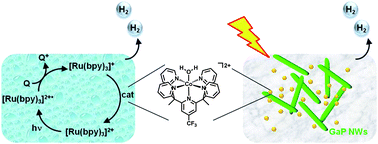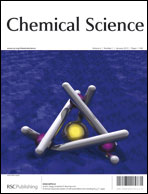Recently, a family of cobalt pentapyridine complexes of the type [(R-PY5Me2)Co(H2O)])(CF3SO3)2, (R = CF3, H, or NMe2; PY5Me2 = 2,6-bis(1,1-di(pyridin-2-yl)ethyl)pyridine) were shown to catalyze the electrochemical generation of hydrogen from neutral aqueous solutions using a mercury electrode. We now report that the CF3 derivative of this series, [(CF3PY5Me2)Co(H2O)](CF3SO3)2 (1), can also operate in neutral water as an electrocatalyst for hydrogen generation under soluble, diffusion-limited conditions on a glassy carbon electrode, as well as a photocatalyst for hydrogen production using either molecular or semiconductor nanowire photosensitizers. Owing to its relatively low overpotential compared to other members of the PY5 family, complex 1 exhibits multiple redox features on glassy carbon, including a one-proton, one-electron coupled oxidative wave. Further, rotating disk electrode voltammetry measurements reveal the efficacy of 1 as a competent hydrogen evolution catalyst under soluble, diffusion-limited conditions. In addition, we establish that 1 can also generate hydrogen from neutral water under photocatalytic conditions with visible light irradiation (λirr ≥ 455 nm), using [Ru(bpy)3]2+ as a molecular inorganic chromophore and ascorbic acid as a sacrificial donor. Dynamic light scattering measurements show no evidence for nanoparticle formation for the duration of the photolytic hydrogen evolution experiments. Finally, we demonstrate that 1 is also able to enhance the hydrogen photolysis yield of GaP nanowires in water, showing that this catalyst is compatible with solid-state photosensitizers. Taken together, these data establish that the well-defined cobalt pentapyridine complex [(CF3PY5Me2)Co(H2O)]2+ is a versatile catalyst for hydrogen production from pure aqueous solutions using either solar or electrical input, providing a starting point for integrating molecular systems into sustainable energy generation devices.


 Please wait while we load your content...
Please wait while we load your content...